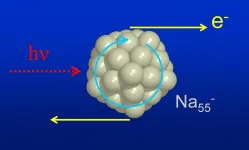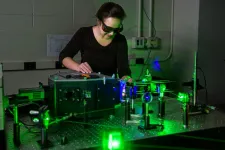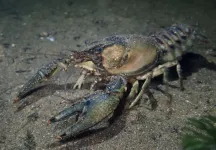But what these changes will be and exactly how they impact the Earth -- and ultimately us humans -- are still difficult to predict. Many of them are so gradual and happen over such a long timescale that they wouldn't be noticeable until they accelerate past the point of no return. Other events, meanwhile, are so rare and unpredictable that it would be impossible to prepare for them by ordinary means. Yet others have such wide-ranging effects that experts from several disciplines would be needed to unravel the mystery.
Fortunately, the National Science Foundation has developed a network of 28 sites representing diverse ecosystems where more than 2,000 multidisciplinary scientists work to get a grasp on the situation, and the changes to come. UC Santa Barbara is home to two of these Long Term Ecological Research (LTER) Network sites: Santa Barbara Coastal (SBC), focused on local kelp forests, and Moorea Coral Reef (MCR), focused on coral reefs in French Polynesia.
"Long term research is really critical for developing predictive models," said Marty Downs, who directs the LTER Network Office, housed at the National Center for Ecological Analysis & Synthesis at UC Santa Barbara. "Models need really good information on the mechanisms that underlie those dynamic relationships. LTER sites have not only the observations of the natural systems but also deliberate experiments that tease out the interacting effects of different drivers."
The value of long-term ecological research is brought to the fore in a newly published special issue of the online journal Ecosphere, in which the importance of LTER research is highlighted in the effort to understand mechanisms that aren't easily addressed by short-term studies, such as time lags, cascading effects, resilience, connectivity and ecosystem state change.
Connectivity: Santa Barbara Coastal LTER Just off the coast of Santa Barbara, giants sway gently beneath the waves, and with them, communities of animals find food and shelter.
"Giant kelp is a foundation species that supports the entire kelp forest community," said project lead investigator Robert Miller. Both on the floor and in the canopy, a diverse array of creatures, including urchins, sea cucumbers, brittle stars, fish and crustaceans rely on Macrocystis pyrifera to rear their young, feed and hide. On the ocean's surface, kelp forests are a source of food for marine mammals and seabirds, and on the shore, kelp wrack nourishes sandy beach organisms.
Unlike many other foundation species, however, giant kelp plants live only a few years, and their populations fluctuate greatly.
"This enables ecologists to examine how such changes in a foundation species affect the associated community," Miller said. "Studies like this might take centuries or longer in, say, a hemlock forest."
Thanks to rapid growth, giant kelp can recover quickly from disturbance by periodic winter storms, and maintain a relatively stable habitat for animals. Wind, waves and current serve to disperse kelp spores between reefs to recolonize them, and send kelp wrack to shore where multitudes of beach critters eat it and live in it. Ocean circulation and upwelling also provide plankton that kelp forest filter feeders depend on for food.
How could a changing climate affect giant kelp's ability to replenish itself and maintain its community? Thanks to years of data from experiments monitoring this rather ephemeral foundation species and the habitat it creates, researchers at the SBC LTER found, to their surprise, that the frequency of disturbance had more impact on the biodiversity of a kelp forest than did the severity of the disturbance. If, as predicted, climate change brings more storms and marine heat waves, kelps' ability to create that essential canopy could be suppressed, leading to a less productive environment overall -- a blow not just to animals that live there but also to visiting seabirds and the sandy beach community, and to the humans who rely on food produced in and supported by the kelp forest.
"An improved understanding of how kelp is affected by the environment, and how it affects the kelp forest community as a whole, informs strategies to conserve and restore these economically and ecologically valuable ecosystems," Miller said. "Long term research," say the Ecosphere article authors, "is vital to understanding how short-lived foundation species and the ecosystems they support react to environmental change, including future climate change."
Corals are at the front lines of climate change, as rising water temperatures, increasing ocean acidification and other stressors continue to take their toll on coral reefs, which provide food, shelter and spawning ground for more than a quarter of all marine animal species.
"Coral reefs are one of the most diverse and productive of the world's ecosystems, supporting vast biodiversity and providing ecosystem services of enormous value," said Russell Schmitt, the principal investigator at the Moorea Coral Reef (MCR) LTER. The millennia-old structures dominate their habitats, but changes to temperature and ocean water chemistry, in addition to the physical pounding from storms and destructive fishing practices, have resulted in widespread death of coral.
"When coral is lost from a tropical reef as a result of these disturbances, it can be replaced by seaweeds, which can negatively impact biodiversity and ecosystem services," Schmitt said. Under normal circumstances, the disturbances pass and corals once again assert their dominance. However, under the constant onslaught of stress, "many seaweed-dominated reefs are remaining in that state, failing to transition back to their coral communities."
The coral reef community at Moorea isn't giving up without a fight. Case in point: From 2007 to 2010, the reefs experienced a series of setbacks -- from an outbreak of coral-eating crown-of-thorns seastar to damage wrought by Cyclone Oli -- that gave the researchers reason to expect the dominance to shift to seaweed in relatively short order. Instead, what they found was a rapid recovery brought about by grazing fish herbivores, which suppressed the seaweed and kept space unoccupied, and vigorous repopulation of coral from nearby reefs. Coral cover on the fore reef on the north shore of Moorea came back from 2% just after Cyclone Oli to 55% in 2015.
Yet the ability of corals to endure and recover from the longer term stress brought on by global warming is still not well understood. What processes allow coral reefs to withstand environmental perturbations and restore corals in the face of a changing climate and an increasing human footprint? How will a warmer and more acidic future due to ever increasing levels of carbon dioxide in the atmosphere alter resilience, community composition and ecosystem functioning in the coming decades?
"Answering these questions requires long-term studies because reefs must be studied as they undergo cycles of disturbances and recovery as temperatures continue to rise, which takes years to decades," said MCR co-principal investigator Sally Holbrook. "Understanding the factors that affect reef resilience is critical for development of management strategies for tropical reefs, which benefits the local communities in Moorea who depend on the reefs for fishing, tourism, recreational and cultural values."
Holbrook added, "Our work illustrates the ecological processes and feedbacks that either must be strengthened to keep a coral reef in a desirable state, or to break if the goal is to restore a degraded reef back to coral."
INFORMATION:



